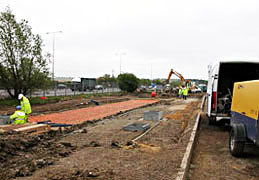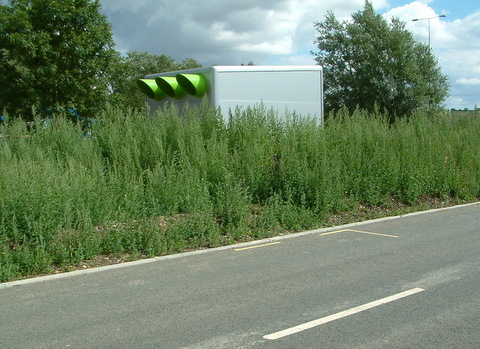TRL reports on IHT ice clearing at Toddington using under road heating
The Transport Research Laboratory has recently published a detailed 116 page report of its two year investigation into using renewable energy generation within the highways network for the Highways Agency. The report focuses on Interseasonal Heat Transfer which was invented, developed and patented by ICAX Limited of London.
ICAX designed and implemented the installation for an access road adjacent to the M1 in Bedfordshire. The IHT system was monitored independently by TRL using monitoring techniques designed and implemented by TRL.
TRL’s full project report PPR302, which is available on the TRL website, explains how IHT successfully captured solar heat energy from the road (in summer 2006 & 2007), stored this in ThermalBanksin the ground and released it back to the road as needed in the following winters in order to maintain the road free of ice throughout the winter.
The TRL report states that:
- “On 7 February 2007 extreme surface temperatures of -6°C and -3°C were measured for a few hours on the unheated and heated sections respectively.
The following morning snow fell and briefly settled although the road surface was being maintained between 0°C and +0.5°C at the time.
Apart from this one incident, no other issues were encountered in keeping the road surface above freezing.
Heating was activated automatically on 16 more days than the 28 days on which salting took place on the nearby motorway.
Further tests would help to refine the parameters used for triggering surface
heating and to conserve heat for more extreme temperature conditions.
Numerical modelling suggests that a significant improvement in winter maintenance
performance is likely if the heat pipes below the road surface were at shallower depths of cover than the 120mm used in this study.”
TRL also investigated the performance of IHT to heat buildings:
-
“An investigation of the performance when heating a nearby building using Interseasonal Heat Transfer was also carried out.
Solar heat recovered during the preceding summer was used in response to the simulated demand for building heat from December to April.
This simulation protocol extracted heat from the stores, and delivered it (via a heat pump) to a buffer vessel.
The buffer vessel simulates the heat load of a building by losing heat to the atmosphere
at a rate determined by a pre-programmed look-up table. During this experiment about 4MWh of heat was rejected in the building heating simulation
and of this about 90% was extracted from the heat store prior to boosting the fluid temperature using the heat pump.
Some electricity was used to drive the pump circulating fluid from the heat store to the heat pump, and the heat pump itself,
and this was taken into account in evaluating the performance of the system.”
And also the performance of IHT to cool buildings:
- “The procedure used for the building heating simulation was effectively reversed to simulate cooling of a building in the summer.
The ability to cool a building is an important feature of any Interseasonal Heat Transfer system in view of
the increased temperatures likely in extended summer periods due to global warming.
During a four month period from May to August 2007, about 10MWh was extracted from the simulated building
and successfully transferred to one of the ground heat stores.
It was concluded that there are significant advantages in providing a self-sufficient building system incorporating both heating and cooling.
In this way heat recovered during the cooling period can be re-used for building heating purposes in the winter.”
ICAX Skid controls temperatures of the road surface at Toddington using under road heating
It is gratifying for ICAX that an independent organisation of the standing of TRL has published such a detailed report whose conclusions support the years of research that ICAX has invested in Interseasonal Heat Transfer and that the report on physical testing verfies the extensive computer modelling that ICAX has undertaken to predict the patterns of heat movement in the ground.
Derek Carder of TRL has written an article on the instrumented tests on the Highways Agency demonstration project at Toddington.
The full TRL Report on Interseasonal Heat Transfer is available: Interseasonal Heat Storage. The full title is: "Performance of an Interseasonal Heat Transfer facility for collection, storage and re-use of solar heat from the road surface."
Related links: Highways Agency | TRL
See also: Solar Roads Solar Runways Ground Source Energy
See also: Energy Trilemma solution.


